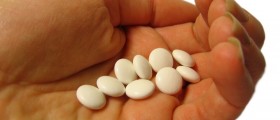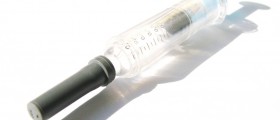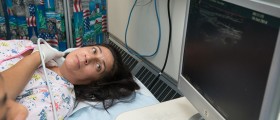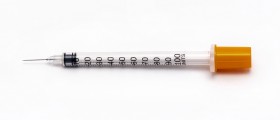
Heparin is as an anticoagulant (blood thinner) preventing formation of clots and expansion of existing clots in the blood. Heparin does not break down clots that have already formed, but allows the natural mechanisms to block body reactions that lead to blood clots formation.
Heparin is used for anticoagulation in blood vessels such as arteries and veins, the lungs, in kidney dialysis and in the heart and other surgeries.
The medication is available as intravenous injection or as a subcutaneous injection, to be used deeply under the skin, in the belly area.
Heparin is a drug with many side effects, including some blood problems, heart condition, possible skin effects, allergic reactions, liver and hormone problems etc.
On the injection site it is possible to experience irritation, redness of skin, mild pain or bruises, but the most frequent type of problems that come with the use of heparin are hematologic (or blood) problems. The medication has been reported to cause hematomas, bleeding in the skull, ovaries and stomach. About 30% of patients using heparin report problems with platelets/blood cells (called thrombocytopenia). Risk of bleeding is especially high in women over 60, patients using Aspirin and alcohol addicts. Patients that used other heparin product before are more likely to manifest thrombocytopenia (HIT) and its complications, HIT I and HIT II. HIT type I does not require special treatment and is not aggressive condition, and HIT type II is a serious condition with the mortality rate of 20-30%. HIT could complicate, and then cause venous thromboembolism, arterial or venous thrombosis, gangrene of the limbs, stroke and skin necrosis. Skinny women, nonwhites, are at higher risk to develop HIT-associated thrombosis. In cases of HIT suspicion, the heparin therapy is immediately stopped and an alternative other blood thinner is administered to the patient.
Cardiovascular side effects are “white clot syndrome”, lowering of the blood pressure, problems with the blood vessels in the brain, pulmonary embolism, infarct, cardiac tamponade, gangrene and loss of the limbs, liver failure and skin necrosis. Some of these complications might have fatal consequences.
Dermatological side effects include skin lesions and necrosis at injection sites, eczema, generalized rash and hair loss. Allergic reactions may also result in lesions on the skin, rashes, fever, asthma and anaphylaxis, and there is a possibility of the connection with the adult respiratory distress syndrome. Elevations in liver enzymes are possible, but there is no evidence that the medication is hepatotoxic. When using heparin, it is possible to experience the increase of thyroxine levels, important for the patient suffering from hypertriglyceridemia, and decrease in aldosteron levels. Changes in metabolism may occur, like increase of potassium and decrease of sodium levels, as well as hypertriglyceridemia. Heparin has an osteoporotic potential, causing the loss of the bone mass in pregnant women, but the effect is most likely reversible.
Problems with the kidneys and urinary tract are rare in patients using heparin.

















Your thoughts on this
Loading...